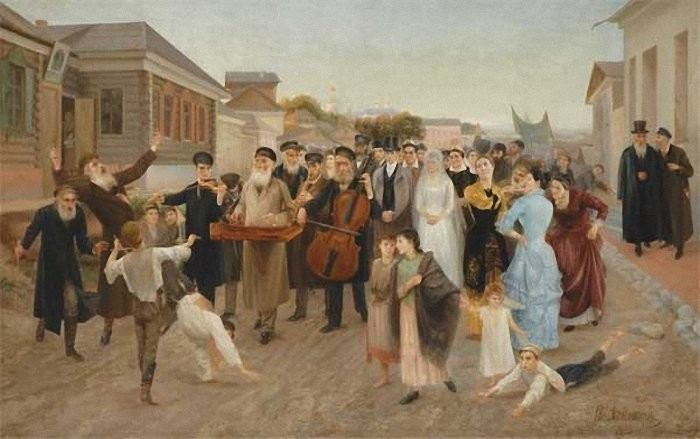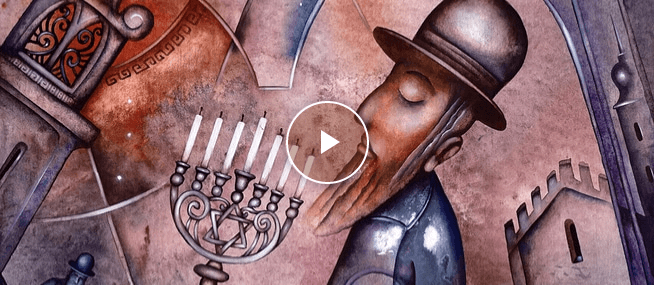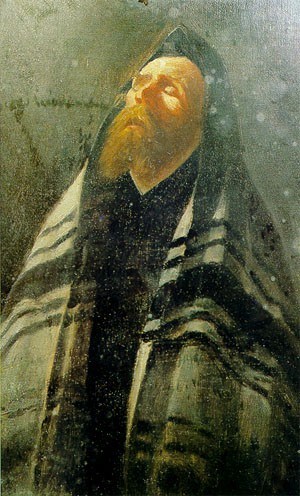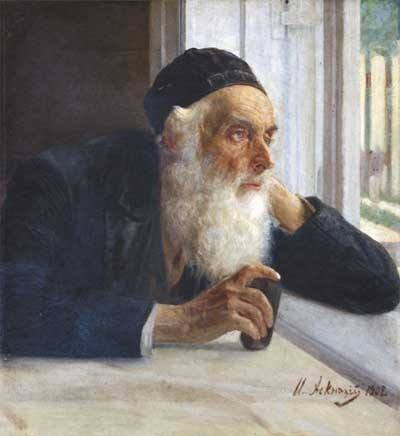
Just more than 600 years old, the relatively new language called Yiddish has sparked interest across the world because of its resurgence despite the most adverse of events. Hence, many people want to find out how to learn Yiddish.
We hope that the following overview of its history, culture, relationship with Hebrew, and courses offered in it would whet anyone’s appetite for the language. Unlike other languages that are native to a particular country, millions of Jews of different nationalities speak Yiddish, and the reasons are not far-fetched.
Schools Excellent in Teaching Yiddish
Apart from Jews, academic and non-Jewish worlds alike now actively study the Yiddish language. Of all the schools that teach Yiddish, Israel Institute of Biblical Studies has been noted for its philosophy, which defies the limits imposed by distance and time. The school boasts of the finest teachers supported by a strong community and superior technology. Together, they make live courses readily available to students across the world.

Israel Institute of Biblical Studies is a partner of the Hebrew University of Jerusalem. Together, they aim at disseminating abundant knowledge through programs that the finest scholars and professionals have designed. The prestigious center for language, history, and culture has produced thousands of efficient students. The results speak for themselves as students have been shown a very different perspective in the Bible texts, geography, language, and people. Consequently, the school has gained worldwide recognition by stirring up passion for the Holy Land.
The Israel and Judaism-rooted two-department academy offers courses that are fully recognized. Top-quality teachers head these departments. The courses in each department are highlighted below:
- I. Bible and Jewish studies department: The courses here are Holy Land Studies, Bible Studies, and Jewish Studies.
- II. Biblical Languages department: The courses here are Yiddish, Biblical Hebrew, Modern Hebrew, Biblical Greek, and Biblical Aramaic.
History of the Yiddish Language
Yiddish has undergone a remarkable evolution, first being a Germanic vernacular and now a developed language of its own, with influences however from Hebrew, Latvian, Aramaic, Serbian, Russian, Romance, and even English languages.
There is no detailed history regarding the time that these influences in the Yiddish language occurred. However, several milestones in the language have been charted.

Earliest History
Around the 10th century, Jews all over France and Northern part of Italy began forming communities in Rhineland and the Palatinate, present-day westernmost parts of Germany. A language known as Laaz, which is as a Jewish-French dialect was then included in the former German-speaking areas. Along with several crusades, parts of rabbinic literature, Mishnaic Hebrew, Aramaic were also included. This combination led to the formation of a single unique language several years later, which would become the official language of Jews in Western Europe for a long time. Hence, western Yiddish was the only form of the language in the early days.
About three centuries later, the continued persecution of Jews led to them migrating eastwards. Consequently, Yiddish became established in eastern Germany, Poland, as well as other territories in Eastern Europe. A prolonged contact with the Slavic languages there would then create some disparities between Yiddish in Eastern and Western Europe.
Middle Yiddish
Fast forward to the 16th century, Jews had the greatest prevalence in Poland, Eastern Europe. Yiddish became so popular that it had become a written language. Hebrew characters were subsequently used to write the language. The gulf between Eastern and Western Yiddish also widened because of the continued interaction of Eastern Yiddish with the Slavic languages.
Modern Yiddish
By the 18th century, Eastern Yiddish had grown so much that it appeared that Western Yiddish was already in decline and virtually extinct. Haskalah movements, which involved promoting the desire of Jews to acquire secular education, also contributed to the decline of Western Yiddish.
Eastern Yiddish continued to flourish to a point where about 3% of the world population spoke Yiddish. This lasted until the mid-20th century when the Holocaust occurred. The Holocaust seemed to mark the end of the language after it lost about 85% of its speakers. In addition, the Soviet Union officially suppressed the language. Subsequently, both types of the language saw a vivid decline. However, Yiddish has made a slow but steady recovery back into relevance, hence the need to know more about the language.
The Yiddish Culture
Prior to the 19th century, there was little to be known about Yiddish culture. However, from the 19th century, Jews began to express themselves in literature, theater, music, poetry, and religious ways.
Yiddish literature involved short stories, novels, and poetry written down. Mendele Mocher Sforim is referred to as the Father of Yiddish literature. Other important figures in Yiddish literature include Sholem Aleichem, Isaac L. Peretz. Newspapers in Yiddish are still relevant today, especially Forverts (The Yiddish Forward) which is over 122 years old.
Another important aspect of Yiddish cultural development was drama. Several drama bands covered the biggest cities and small Shtetls alike in Russia and Poland. Some of the plays were originally written and portrayed in Yiddish while others were translated and performed in Yiddish. An example is The Merchant of Venice. The Yiddish press released several publications.
Yiddish theater is said to have begun with “Purimshpil,” an adapted comedy play constructed from the book of Esther. Abraham Goldfaden started Professional Yiddish theater. He wrote many plays towards the end of the 19th century. The rich Yiddish theatrical tradition is very much appreciated. The National Yiddish Theatre Folksbiene is the oldest venue for Yiddish theater.
Yiddish music takes its roots from Judaism. Jews have always loved music, as is seen in Exodus 15 where Moses and Miriam sang a song along with the Israelites. Most Yiddish prayers are sung. Stringed instruments such as Viola, fiddle were used for Yiddish traditional music. Other popular instruments include the tsimbl, flute, clarinet (in later years). Yiddish musical style is described as Klezmer, which means instruments of song.

Relationship Between Yiddish and Hebrew Language and History
Yiddish and Hebrew come from two entirely different language families. Yiddish is of Germanic origin while Hebrew is of Semitic origin. Hence, they are different languages. However, similarities exist.
The majority of people who formed the Zionist movement were Yiddish speakers. Yiddish influenced Modern Hebrew this way, especially in syntax. Yiddish and Hebrew relationship may confuse some people because:
- Yiddish is written in the Hebrew alphabet. However, silent Hebrew letters are vowels in Yiddish
- Jewish people speak both languages.
- Yiddish and Hebrew share grammatical formations. The theoretical and philosophical Yiddish vocabulary is derived from rabbinic literature. Likewise, aspects of modern Hebrew originated from Yiddish.
A brief history of Hebrew sees Modern Hebrew stemming from Biblical Hebrew in the 20th century. The approximately 3000-year old Hebrew language was long abandoned as a spoken language after so many persecutions. However, Yiddish was spoken at some point during the hiatus as aforementioned.
Fun Facts About Yiddish
- Yiddish actually means Jewish literally.
- There is no capitalization in Yiddish language except for the five letters that occur at the end of a word to change it.
- There are several schools that speak only Yiddish
- There is no preterit, simply past perfect.
- Over 60% of Yiddish words have German roots.
- Over a million books have been written in Yiddish
A Renowned Yiddish Teacher (He Designed Courses on How to Learn Yiddish)
Daniel Birnbaum
Daniel Birnbaum has an unprecedented passion for Jewish languages. Having studied literature at the Hebrew University of Jerusalem, he developed an interest for Yiddish literature. He consequently became committed to the study and practice of Yiddish language in his work and studies. He has an M.A degree in literature, and his thesis is about Abramowitz, a popular figure in Yiddish history and his works.
Daniel has a 12-year experience in teaching Yiddish, having started teaching in 2007. At the Tel Aviv University where he lectures, he teaches the language to both Hebrew and non-Hebrew speakers as well as Jewish and non-Jewish students.
The Yiddish Course
This beginner-level course offered by the Israel Institute of Biblical Studies and presented by Daniel Birnbaum aims to teach students the rules that govern Yiddish grammar, sentence structures, and the basic Yiddish vocabulary they would encounter while on the Yiddish literature. The aim is that by the end of the course, students should be able to hold basic conversations in Yiddish.

The syllabus is 30 units. It kicks off in unit 1 by familiarizing students with using the phonetic system of reading and writing, which is essentially Hebrew alphabet based. It also discusses the Hebrew-Aramaic element found in Yiddish. Construction of simple sentences and a first Yiddish proverb conclude this interesting unit.
Unit 2 teaches personal pronouns and how to conjugate regular verbs in the present tense. Students discover the proper way to introduce themselves, and the Yiddish alphabet becomes mastered at the end of this unit. In unit 3, different pronouns are taught, and students learn rules behind word order in Yiddish. They also have new words added to expand their vocabulary.
Unit 4 contains primary colors in Yiddish. It also introduces new adjectives. Students meet “Rabtshik.” By the end of this unit, students are able to ask polar questions, understand definite and indefinite articles, identify noun gender, and learn to turn simple sentences into negative. Unit 5 teaches how to greet and respond to greetings. It also teaches numbers 1 to 10 in the language along with elementary mathematical calculations. The next unit, in class, explains the difference between “redn” and “zogn”. It then acquaints students with new verbs and engages them in a practice session. Unit 7 demonstrates vocabulary for family members along with possessive pronouns.
In unit 8, students learn additional verbs and practice them using pictorial aids. It also introduces the modal verb (to want). They also learn question, answer words, and finally use words in the right order. The next chapter dwells on motion verbs, such as to go, to come, to run, etc. Students also recognize time reading in Yiddish. The first third of the syllabus is completed by teaching students how to express their passion using words such as “like” and “love.” It also teaches the imperative form of the verb.
Unit 11 adds more vocabulary, the plural form of verbs. It contains two short texts to reinforce what has been learned. Finally, they learn verb forms such as “Shtudirn” and “Telefonirn.” Terms for shopping for groceries, clothes, etc.are learned in unit 12. Unit 13 teaches regular verbs in their past tenses. Word order is also reinforced for further clarification. Students conclude the chapter with vocabulary for hobbies such as playing instruments or games. Unit 14 is a continuation of chapter 13, and with verbs in unstressed prefixes, and dative cases containing personal pronouns. Unit 15 solely focuses on common irregular verbs in their past participle forms.
Unit 16 teaches the verb “to become” and the past form of “there is.” Unit 17 introduces the future tense, grammatical situations in Yiddish, particularly the direct object. Additionally, it revises concepts learned in the previous units and teaches the modal verb, to know. The next unit teaches students several reflexive verbs. It also teaches parts of the human body in Yiddish. Unit 19 further revises previously learned concepts. In unit 20, students come across a dialogue involving a granddaughter and her grandmother, where they learn several verbs and adjective declension in the nominative case.
The last third of the syllabus starts with a review of changes found when a noun is used in the accusative form. It introduces adjectives in this case as well and adds animal and food-related vocabulary. Unit 22 follows by highlighting changes discovered when a noun is used in the dative case. It follows a similar path for adjectival endings and concludes with the Yiddish song, “Oyfn Pripetchik.”
Unit 23 teaches how to use these dative cases to express oneself, for example, when cold. It subsequently teaches frequently used weather terms. Unit 24 is for the Chanukah theme. It also teaches Yiddish holiday songs and introducing a new method of adjective usage. The much-anticipated Yiddish song, “Rebbe Elimeylekh” is seen in unit 25. Additionally, it teaches inflection of some words and demonstrative pronoun use.
Unit 26 paints the beautiful story of the creation and the significance of the Sabbath. It shows ordinal numbers, comparative and superlative adjectives. The following chapter dwells on adverbial compliments such as “in, out, up, down” and how to combine verbs. Unit 28 is about a Yiddish folk song, love and romance terminologies and review of previously learned concepts.
Unit 29 is exclusively keen on The Holocaust and its related vocabulary. It also shows the songs that Jewish partisans sang in World War 2. The syllabus concludes with famous Yiddish sayings and consolidation of all the topics learned.
The course is taught in English and is worth three credits by the Hebrew University of Jerusalem. There are 24/7 online forums, technical support, extra practice sessions, and students can record these lessons.
Appraisals of the Yiddish Courses
Students who have taken courses in this school have praised its completely student-friendly approach. A student said that knowing that she could choose any time of the week to have her lectures was amazing. A small class size promoting a more efficient interaction was also commended on.
Another student commented on the technology where one could virtually write on the whiteboard used during the class by making use of a pen tool. The passion and commitment of the teachers is an area that cannot be overemphasized. These teachers make sure every student is carried along. Regular reminder emails and updates sum up a dream class.
Starting on the Right Track
Taking courses on how to learn Yiddish is important when one considers just how much influence the language has on Hebrew, German, and other languages in Europe. Yiddish has a rich Jewish history and culture. With the right learning environment as aforementioned, there is no limit to how far one can go with this exciting and invincible language.